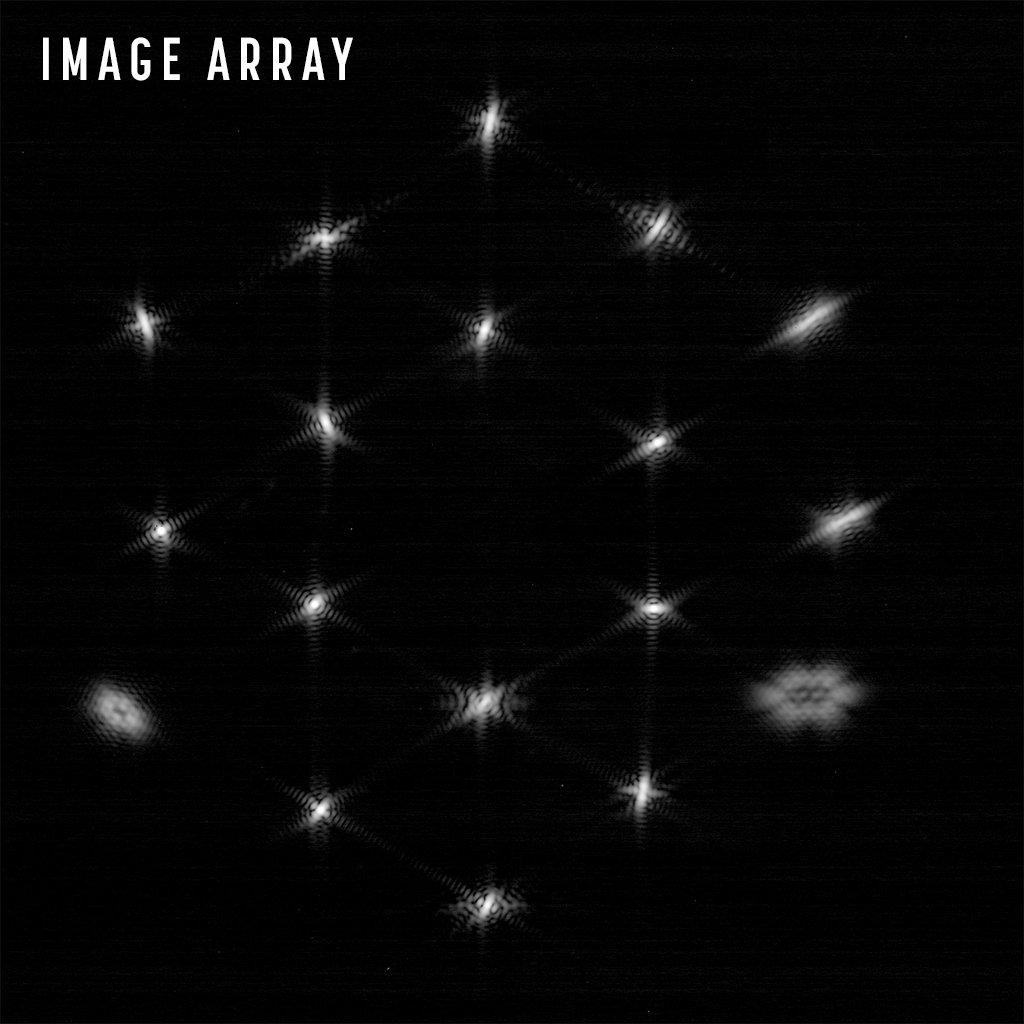Focusing Webb
Today we have our first ever guest contribution, one from Glen Herriot who wrote yesterday to urge me to post about the recent mosaic image of the star HD 84406 from each of the James Webb Space Telescope’s 18 mirror segments. Unlike the image I posted back on February 11, NASA’s engineering team have since coarsely arranged Webb’s mirrors so that now the images of that star are arranged in a close-packed hexagonal pattern that resembles how the mirrors themselves are arranged. This distribution allows the differences in the image quality between segments to be easily discerned. I’ve attached the amazing image above. Glen’s very informed description speaks for itself, so rather than paraphrase it badly I’ve decided to simply reprint it here:
“[The image] is really exciting for an optical aficionado. First of all they had to point the telescope to various positions to make a mosaic the sky, to find all 18 off-kilter images. Then they had to rock each mirror to identify which produced what image moved. Then they had to slowly shepherd the images into an array matching 1:1 the mirror positions in the array, all fitting onto this one camera image.
They also had to focus the secondary mirror to try to do the best job overall.
What is interesting is that the images at 4 and 8 o’clock are so drastically out of focus, that they are in selfie-mode and nearly imaging the telescope itself (pupil images). These segments will need to be jacked up or down a lot still. Most of the other segments have elongated bright central images which is the signature of astigmatism combined with being a bit out of focus. Each segment has over a dozen motors to warp it, which will take out the astigmatism and other more fancy aberrations.
The best image is at the tip of an hour hand at 8 o’clock, but it is still not perfect. The central dot is nearly circular. The 6-fold pattern is expected, and arises from diffraction due to the hexagonal segment shapes. It shows sections of perhaps 8 Airy rings [, indicative of damn good quality. {Ed. note: Airy rings are what perfectly focused points of light should look resemble as the light actually interferes with itself to produces dark and light rings around a central bright spot.] It looks a lot like the final Webb image of a star. But the central dot is ~5x bigger than the finished telescope will produce. I.e. the resolution will be much better.
Now NASA will warp and adjust segment to look a lot like this one, only sharper, while interleaving adjustment for best overall focus using the secondary mirror.
Finally, all the individual images will be walked slowly into the centre and lined up. This will be followed by further optimization of focus.”
Well spoken (and thanks for the day off), Glen! For those who’d like to read more about what next steps the engineering team will take to perfect Webb’s imaging capability, here’s a link a very informative blog post by members of the team. What is described above was the actually just the second of seven steps, and what’s to come includes various precise image stacking, phasing and alignment stages. (To give a sense of scale to the precision the team plans to achieve, the blog post says that if the Webb primary mirror were the size of the continental US, each segment would be the size of Texas and the team needs to align the heights of each of those segments to each other to an accuracy of less than 4 cm.) Again, it will take about 2.5 more months from now to complete this painstaking process but the results will be well worth it, I’m sure!
